2021 marks an important year in Airstream history – our 90th anniversary. Wally Byam opened the first Airstream factory in 1931. But long before then, he had an adventurous spirit and an eye for design. This year we will honor the incredible adventures and breathtaking moments that make up our 90-year legacy with the opening of the Airstream Heritage Center. Visitors to the Heritage Center will discover the historic milestones and extraordinary individuals that have shaped Airstream’s past and continue to inspire its infinite future.
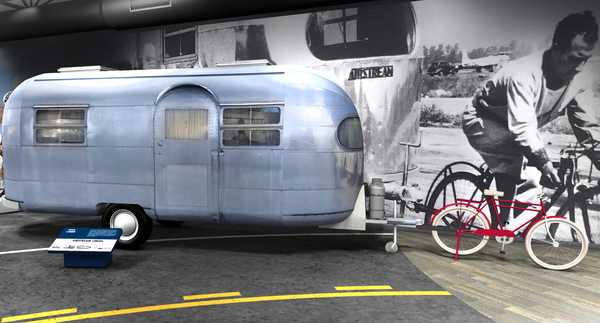
Wally Byam was born on the Fourth of July, 1896, in Baker City, Oregon. He grew up working hard on his family’s sheep farm, living in a wooden wagon with everything he needed – a stove, food, and water.
After graduating from Stanford in 1921, Wally worked in publishing and advertising. In 1929, inspired by his first wife who did not share his love of camping, Wally put together a tent contraption on top of a Model T chassis.
Later deciding to build a proper trailer, Wally designed a teardrop-shaped permanent shelter with a stove and ice chest. It caught the eye of other travelers and Wally began publishing DIY guides for others to build this trailer, known as the Torpedo Car Cruiser. Eventually, Wally opened a small trailer factory in Culver City, California in 1931 – Airstream’s first factory.
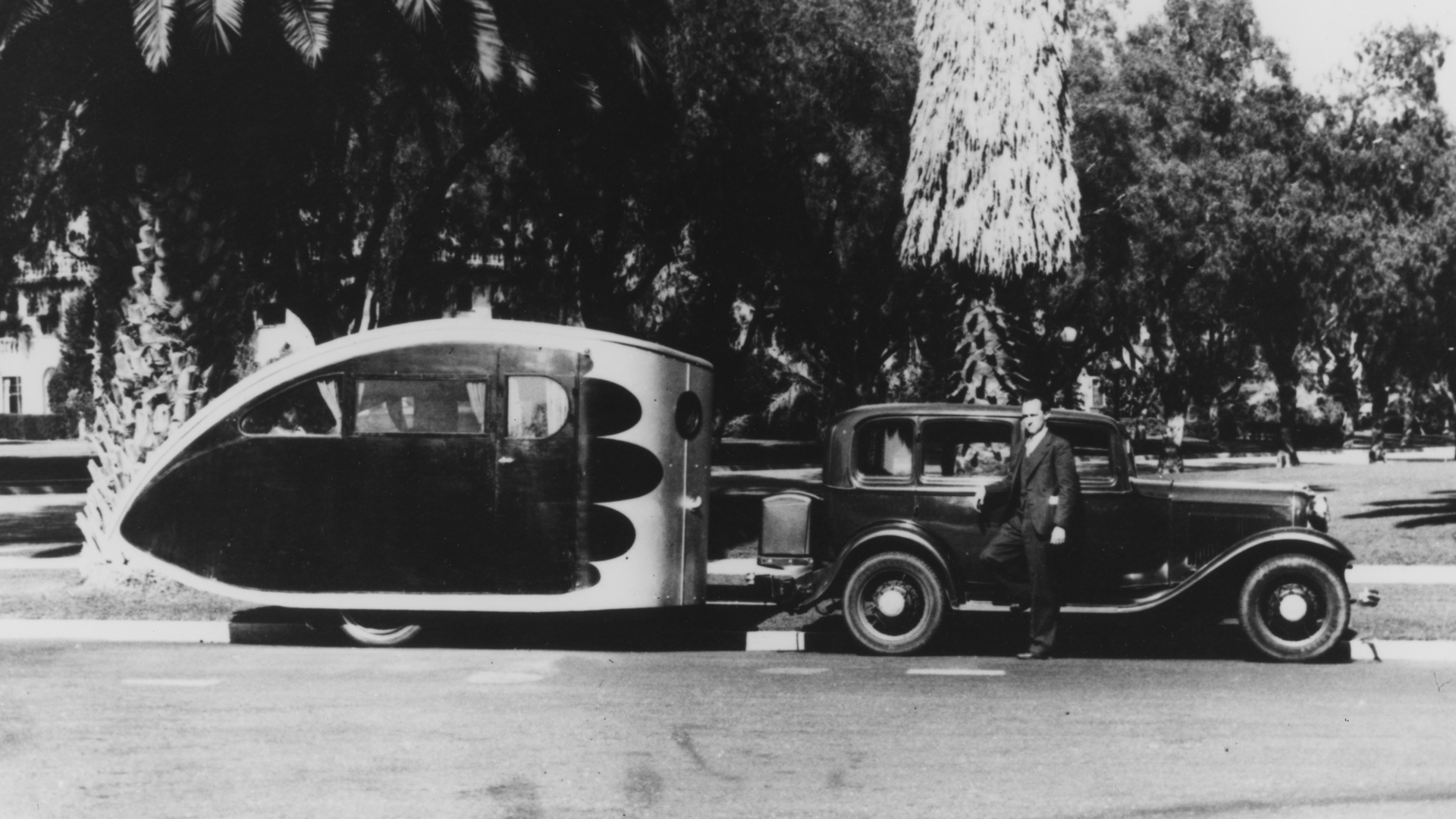
A revolutionary moment in Airstream history occurred in 1936 when Wally introduced the Airstream Clipper. As Airstream’s first riveted aluminum, semi-monocoque trailer, the Clipper had streamlined curves, insulated walls, an interior with luxurious wood finishes, and customizable floor plans.
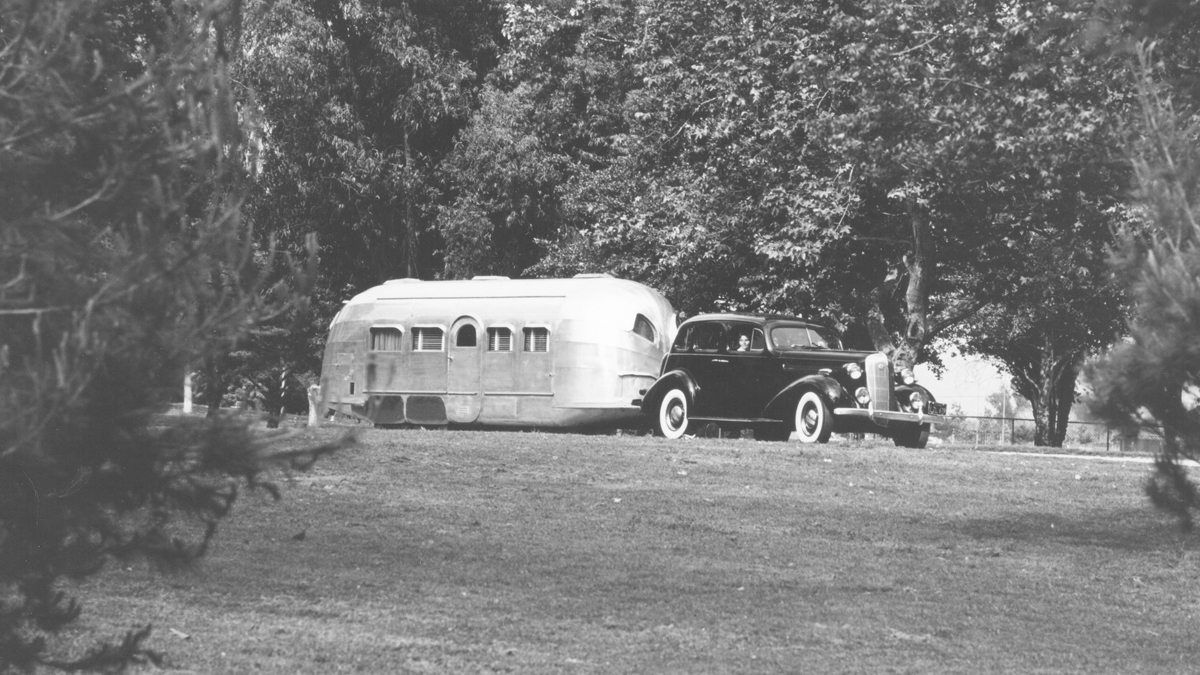
The Clipper was a success, but staying afloat during the Great Depression was no easy feat. Wally pushed on until the United States entered World War II and aluminum became a restricted material. Wally chose to close up shop, finding employment in the aviation industry.
After the war, Wally introduced the Airstream Liner in 1947. The Liner resembled the pre-war Airstream Clipper but incorporated the engineering knowledge that Wally had gained while working in the aircraft industry.
In 1951, Wally decided to lead a group of trailers from Texas to Nicaragua. It was not an easy trek-rough roads and bad weather led to equipment failures. Only 14 of the original 63 trailers completed the trip, and Wally said he’d never do it again. Luckily for all of us, that vow lasted only a year.
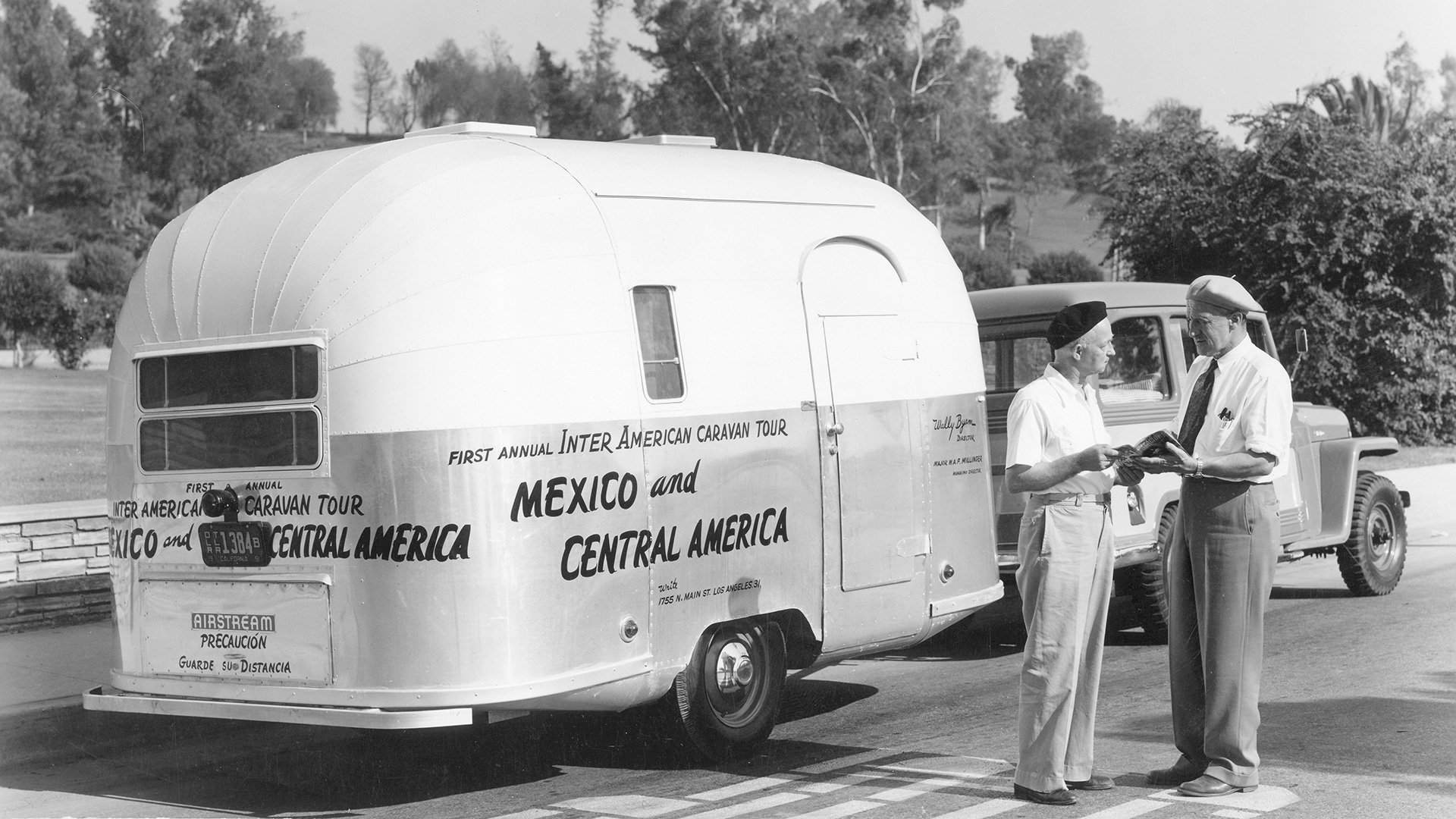
By 1952, Airstream had outgrown its Los Angeles plant and needed to expand. Rather than staying on the West Coast, Wally traveled east to scout locations across the Midwest, eventually finding a factory for sale in Jackson Center, Ohio. It turned out to be a great choice – nearly 70 years later, Airstream is still headquartered in Jackson Center.
During the 1950s, the Wally Byam Airstream Caravan became a true phenomenon with trips across Canada, through Mexico and Central America, and overseas to Europe. In 1955, during the Eastern Canada Caravan, the Wally Byam Caravan Club was formed. Wally’s cousin and trusted confidant, Helen Byam Schwamborn, would lead the Club for decades – organizing the iconic Caravans and spearheading the famous rallies.
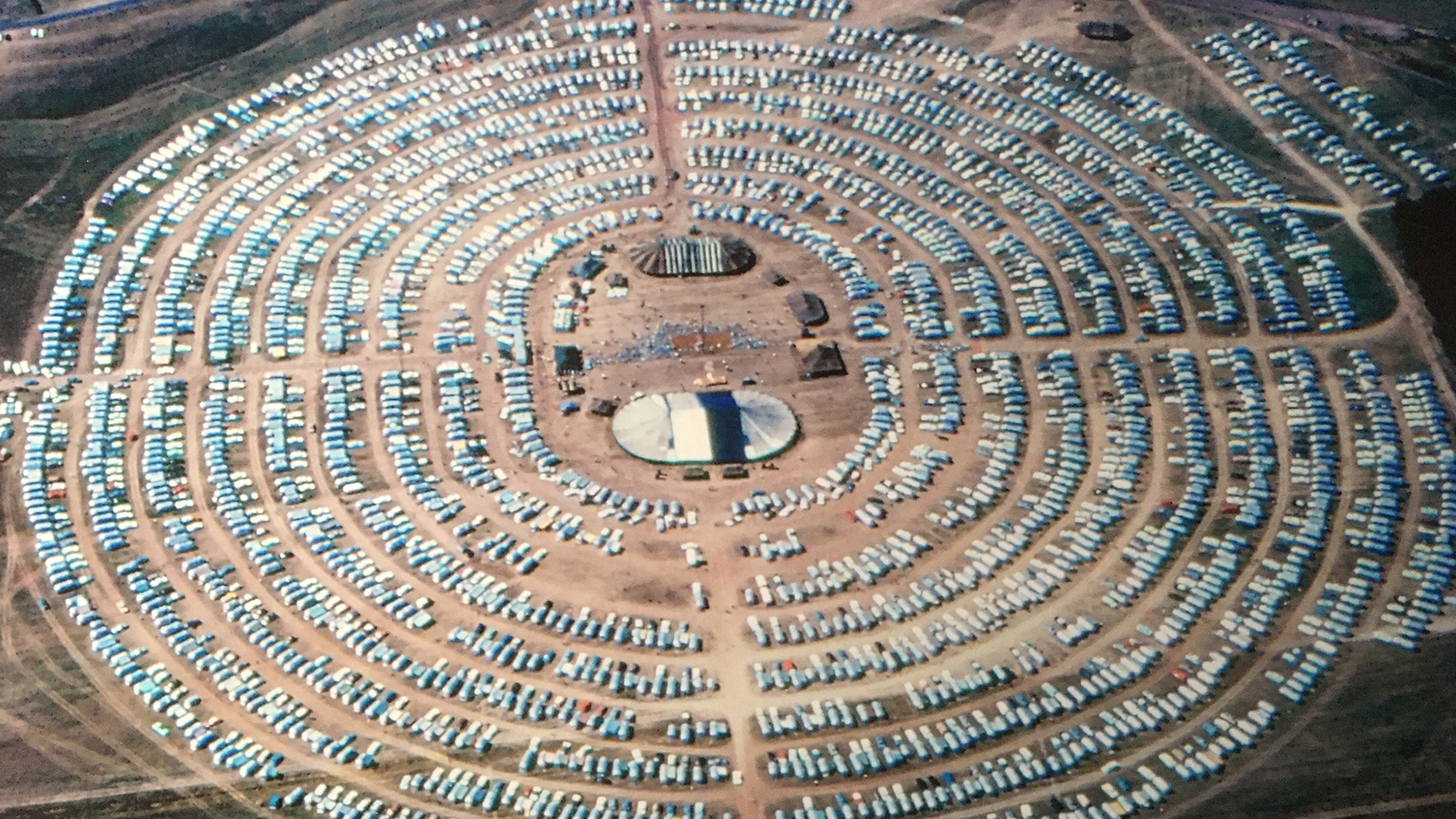
As people took Airstream travel trailers to new and more challenging locales, they needed more. In 1958, the Airstream International was developed as the first-ever “self-contained” travel trailer – free from external trailer hookups. With this, Wally had even bigger goals in mind. In 1959-1960, Wally led a Caravan of 106 people from Cape Town, South Africa to Cairo, Egypt.
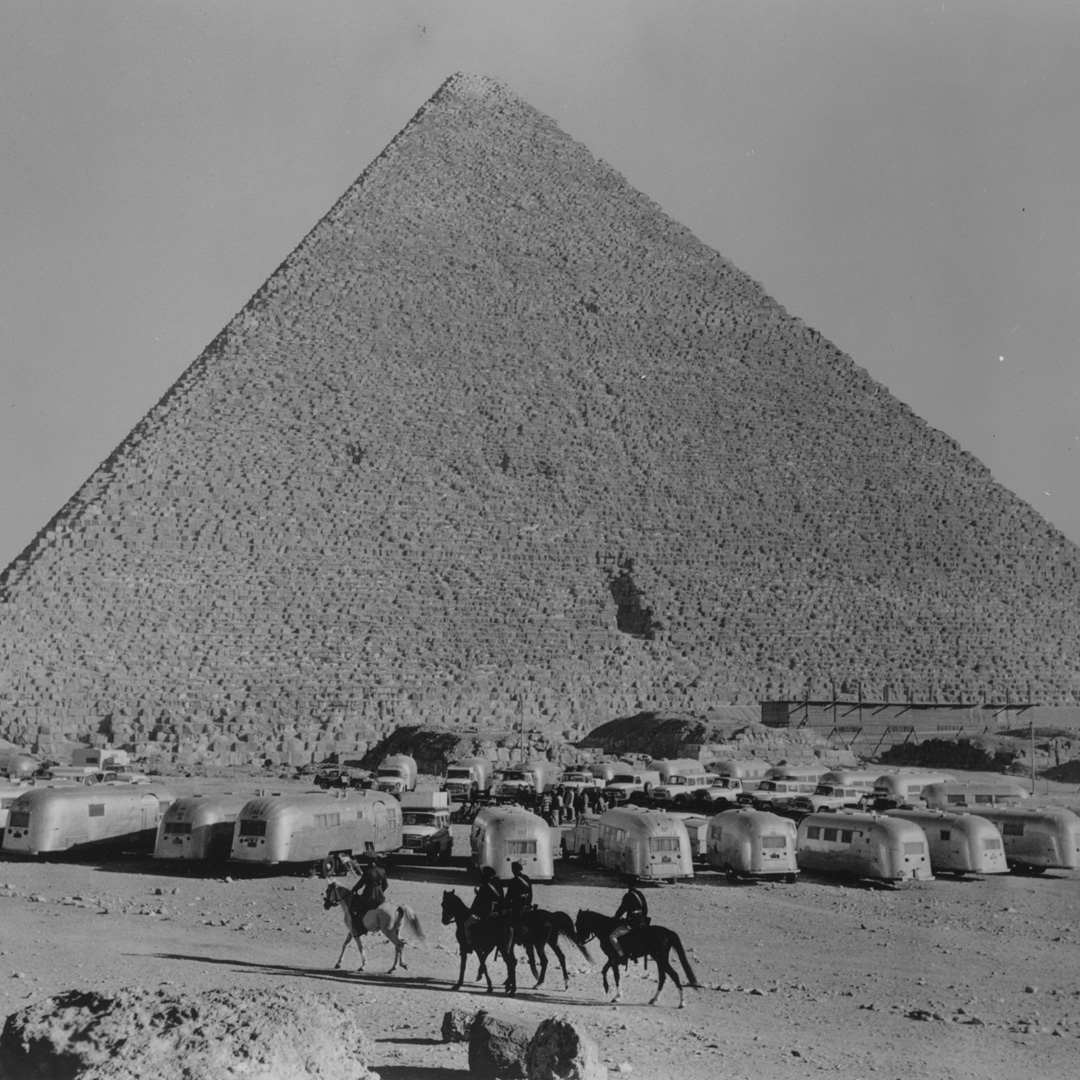 After battling cancer with his trademark tenacity, Wally Byam passed away on July 22, 1962. He left behind an Airstream company at its peak, working to meet the demand that Wally’s vision and determination had inspired.
After battling cancer with his trademark tenacity, Wally Byam passed away on July 22, 1962. He left behind an Airstream company at its peak, working to meet the demand that Wally’s vision and determination had inspired.
In 1963-1964, fulfilling a promise he had made to Wally, Airstream’s Chairman of the Board Andy Charles led the famous Around the World Caravan. The iconic Caravan of 105 people traveled from Singapore to Cabo Da Roca, Portugal, even adventuring behind the Iron Curtain.
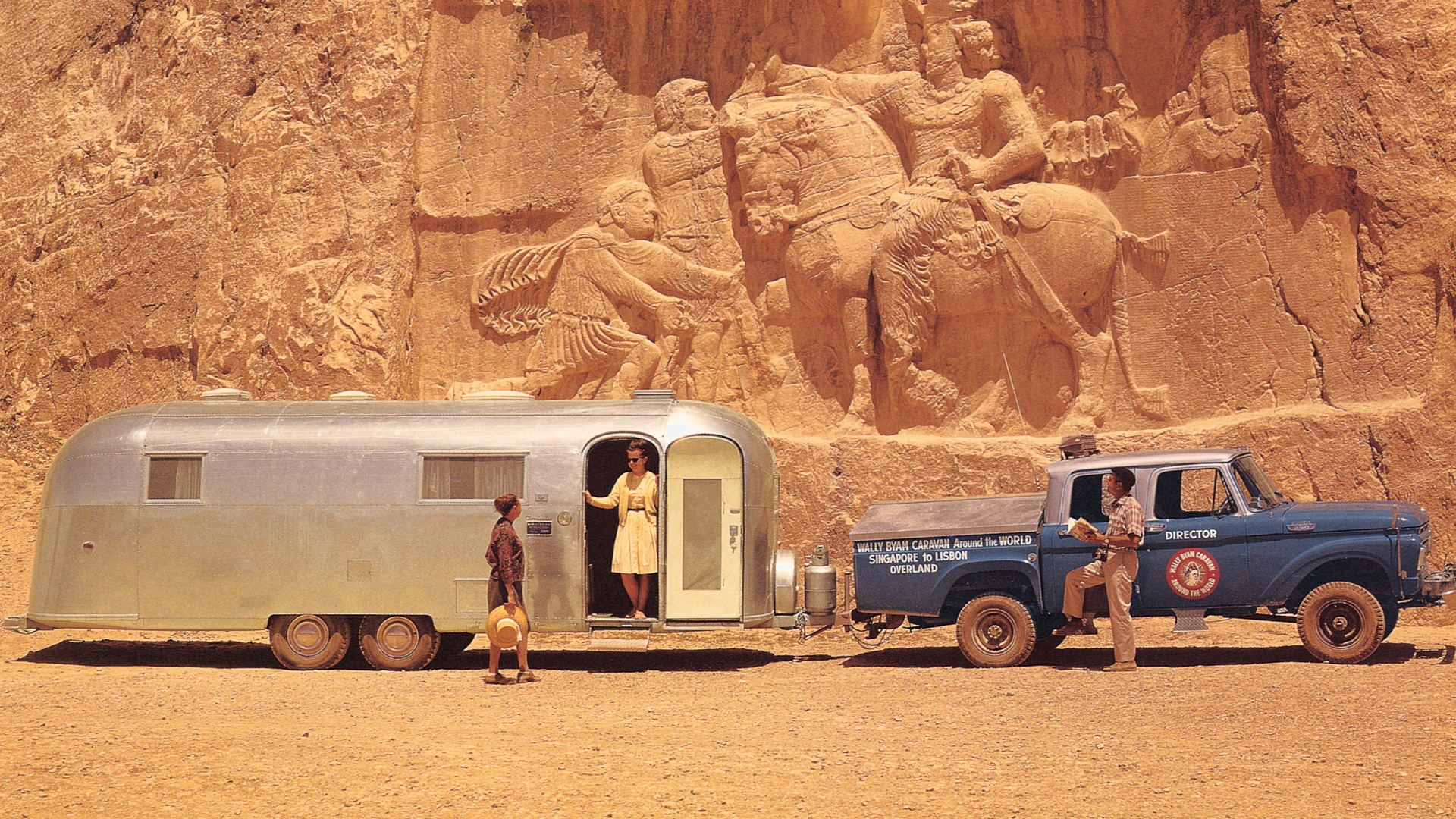
In the late 1960s, fearing that astronauts might bring back a disease or other contagion from the surface of the moon, it was decided that the Apollo 11 trio would be quarantined upon their return. Airstream was selected to build a Mobile Quarantine Facility that would provide comfort and safety to the astronauts.
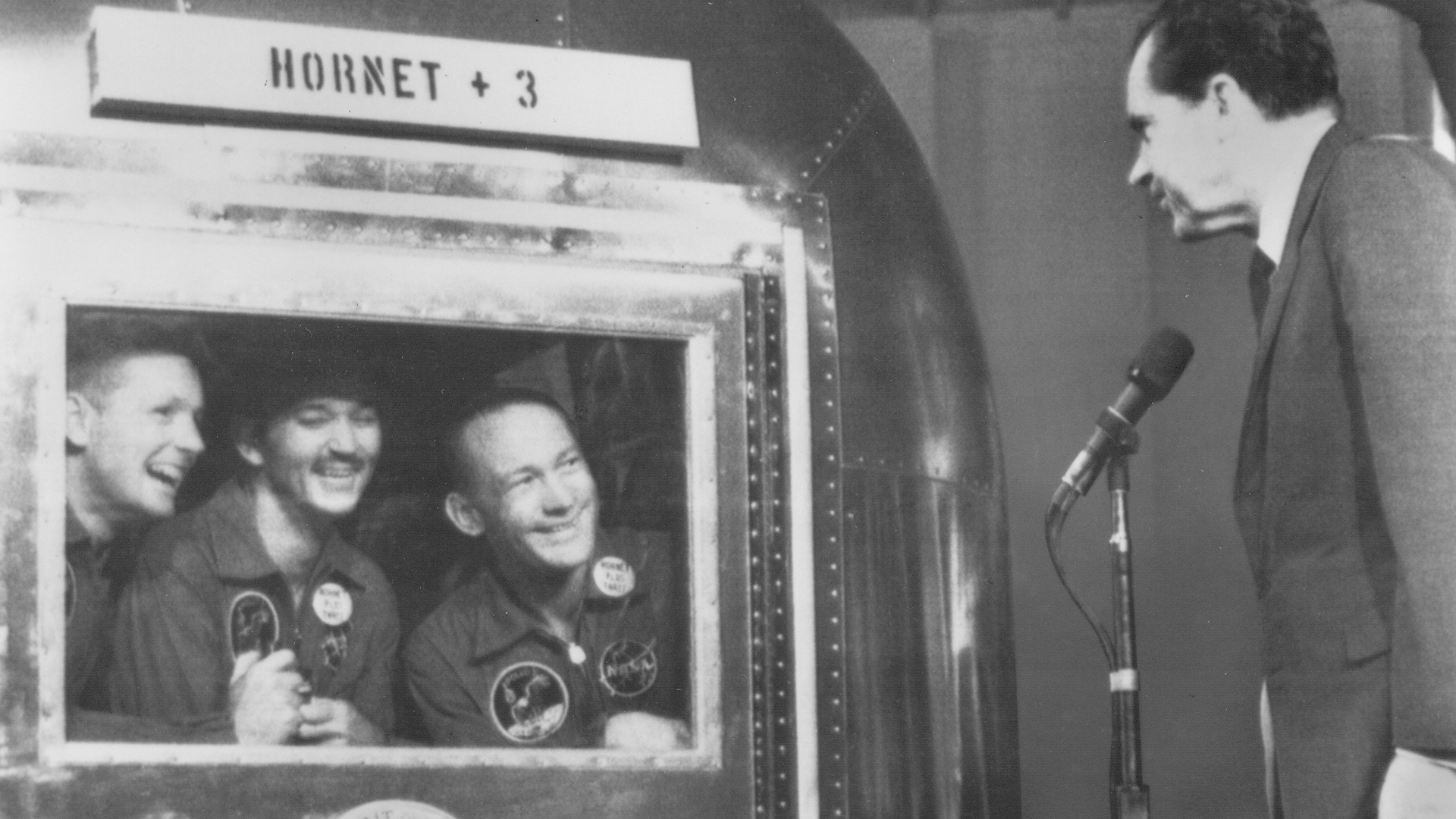
In 1972, Airstream wanted to develop a travel trailer that gave people a medium-priced option. Airstream created the Argosy line, with its own logo and style. The Argosy trailer is recognizable by its painted exterior. The Argosy line was used as a testing ground for new ideas, which included the Argosy motorhome in 1974. This will to innovate would live on in later models like the Classic motorhome, the Land Yacht motorhome, and the Interstate Touring Coach.
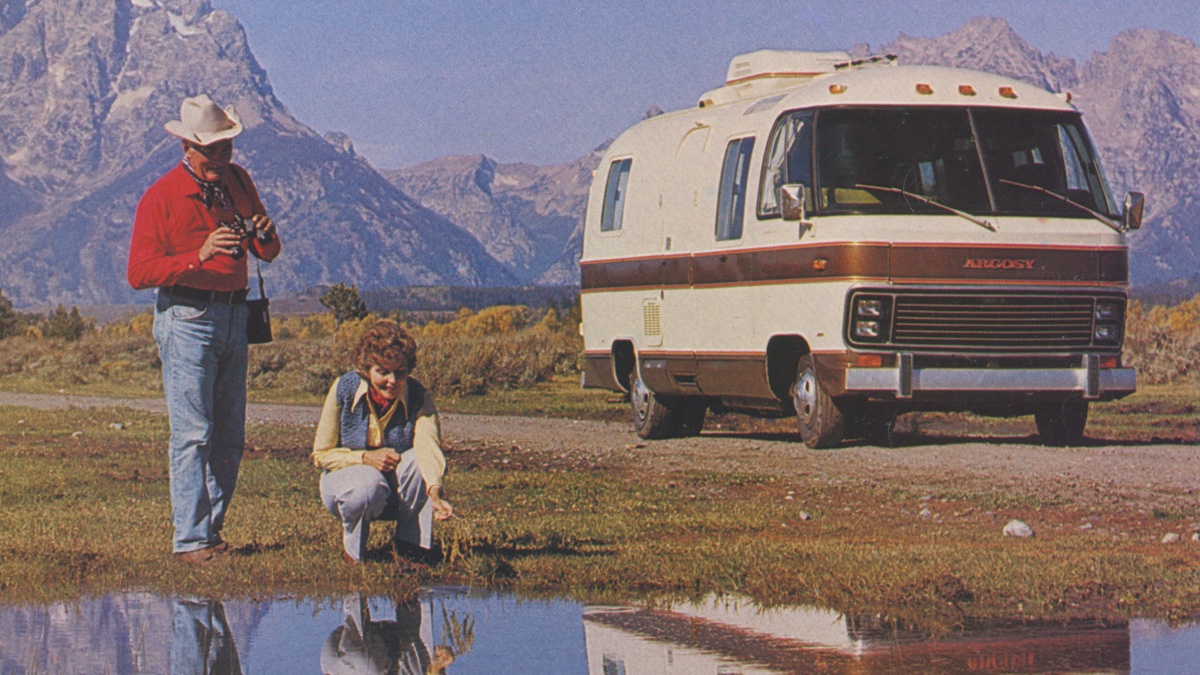
As a recession and the gas crisis hit America in the late 1970s, times were tough for Airstream. The California plant was closed in 1978, and all manufacturing and executive operations would move to Ohio – where they remain today.
Airstream leadership had been in flux for several years following the gas crisis but in 1980, stability came once again. In August of 1980, Wade Thompson and Peter Orthwein moved to form a new company, Thor Industries, and acquire Airstream. And that association continues to this day, over thirty years later.
Airstream would once again find its place in space when a modified Airstream Excella Motorhome, nicknamed the Astrovan, was selected to transport Shuttle Era astronauts out to the launch pad. Caravan history would also be made during the 1980s with a series of nine Caravans to China from 1985-1988.
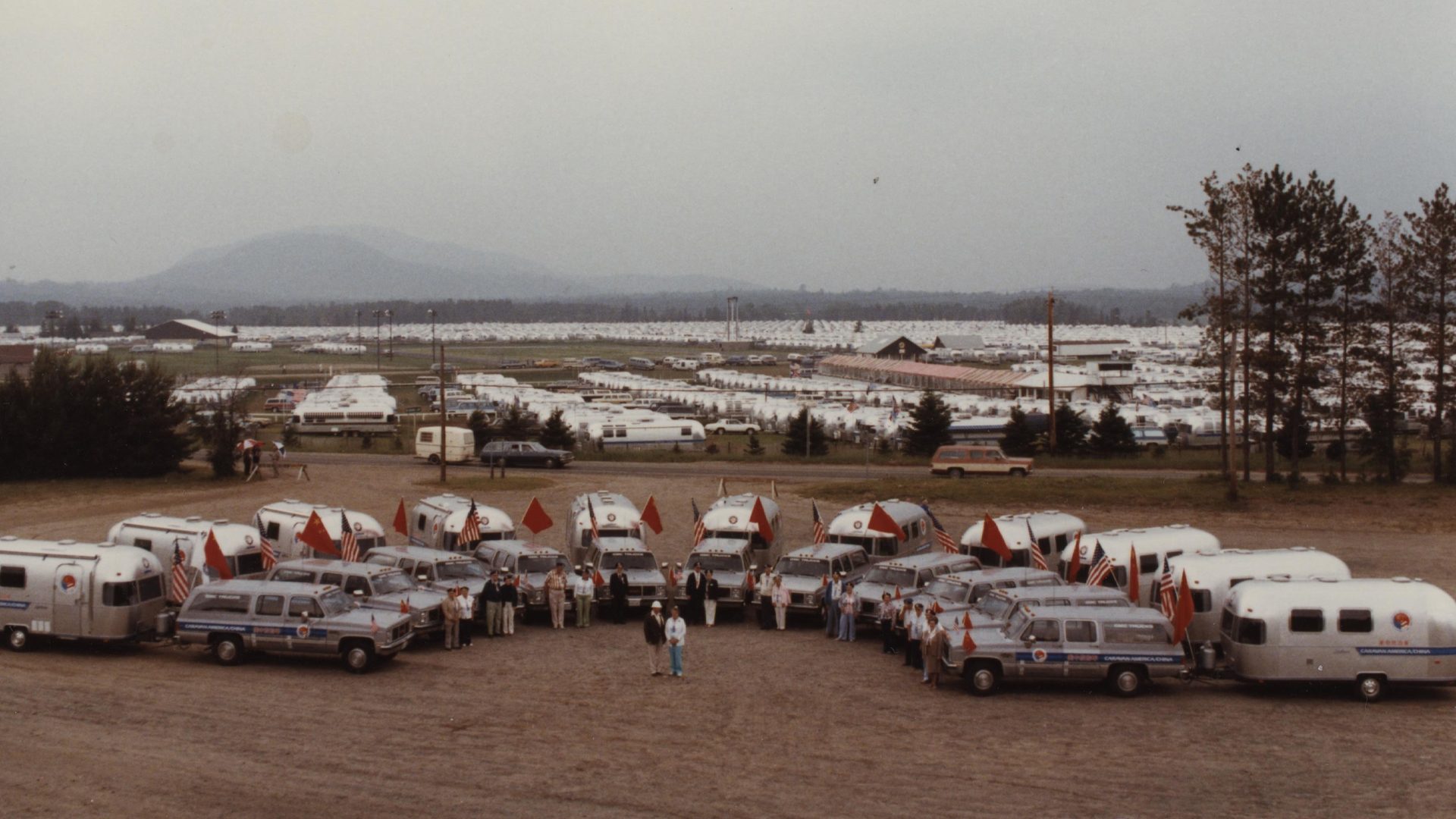
The 1990s featured the return of smaller-sized Airstreams with the reintroduction of the Safari and Bambi models to attract buyers with smaller tow vehicles. And in 2002, the interior of the Airstream travel trailer received its most revolutionary redesign in decades with the introduction of the International CCD. A collaboration with architect, photographer, and modern design enthusiast Christopher C. Deam, this model featured pops of bright colors and accentuated the beauty of the aluminum interior.
Airstream’s 2011 collaboration with Mercedes-Benz® on the Interstate Touring Coach was the result of decades of innovation. This inspired relationship continues today as iconic Airstream design and legendary German engineering come together in our Class B and Class B+ RVs.
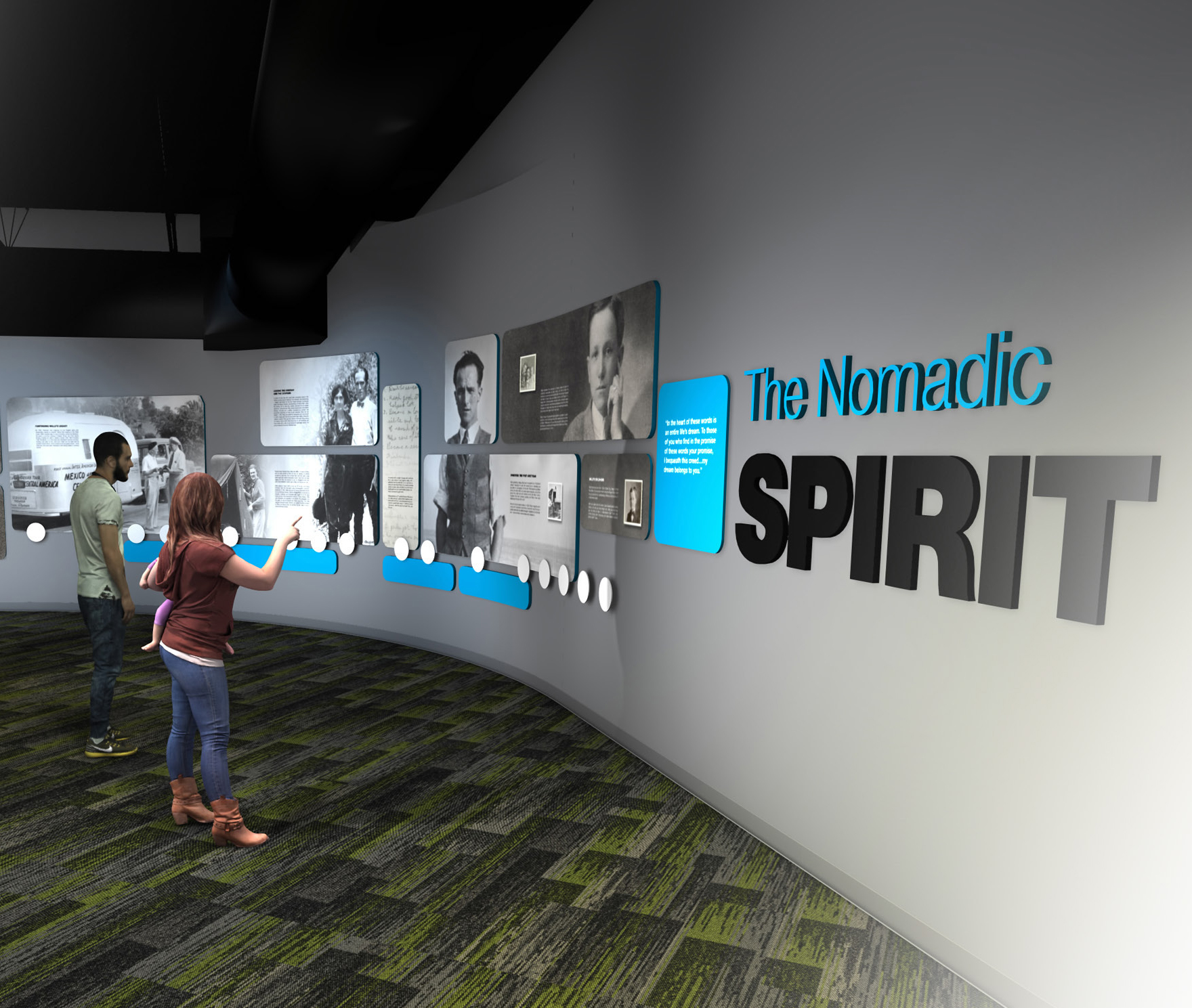
In 2018, Airstream broke ground on its first new plant in more than 50 years. The new 750,000-square-foot headquarters enables a continued commitment to the quality and craftsmanship we’re known for. The new plant is also home to the Airstream Heritage Center, a museum space dedicated to the legacy of this iconic American brand.
Keep your eyes on the stars, and the stars in your eyes…see if you can find out what’s over the next hill, and the next one after that.
- Wally Byam
The Airstream Heritage Center will allow visitors to experience this 90-year legacy first-hand. From rare vintage Airstreams, to displays of Caravan treasures, never-before-seen films, and more, the Airstream Heritage Center is a celebration of the hard work, creativity, passion, and adventure that made the past 90 years possible and continues to inspire the road ahead.
The opening of the Heritage Center was originally planned for 2020 but was delayed due to the impacts of COVID-19. We are monitoring the situation closely and hope to be able to safely open the museum and the new travel trailer production facility to the public in late 2021.









